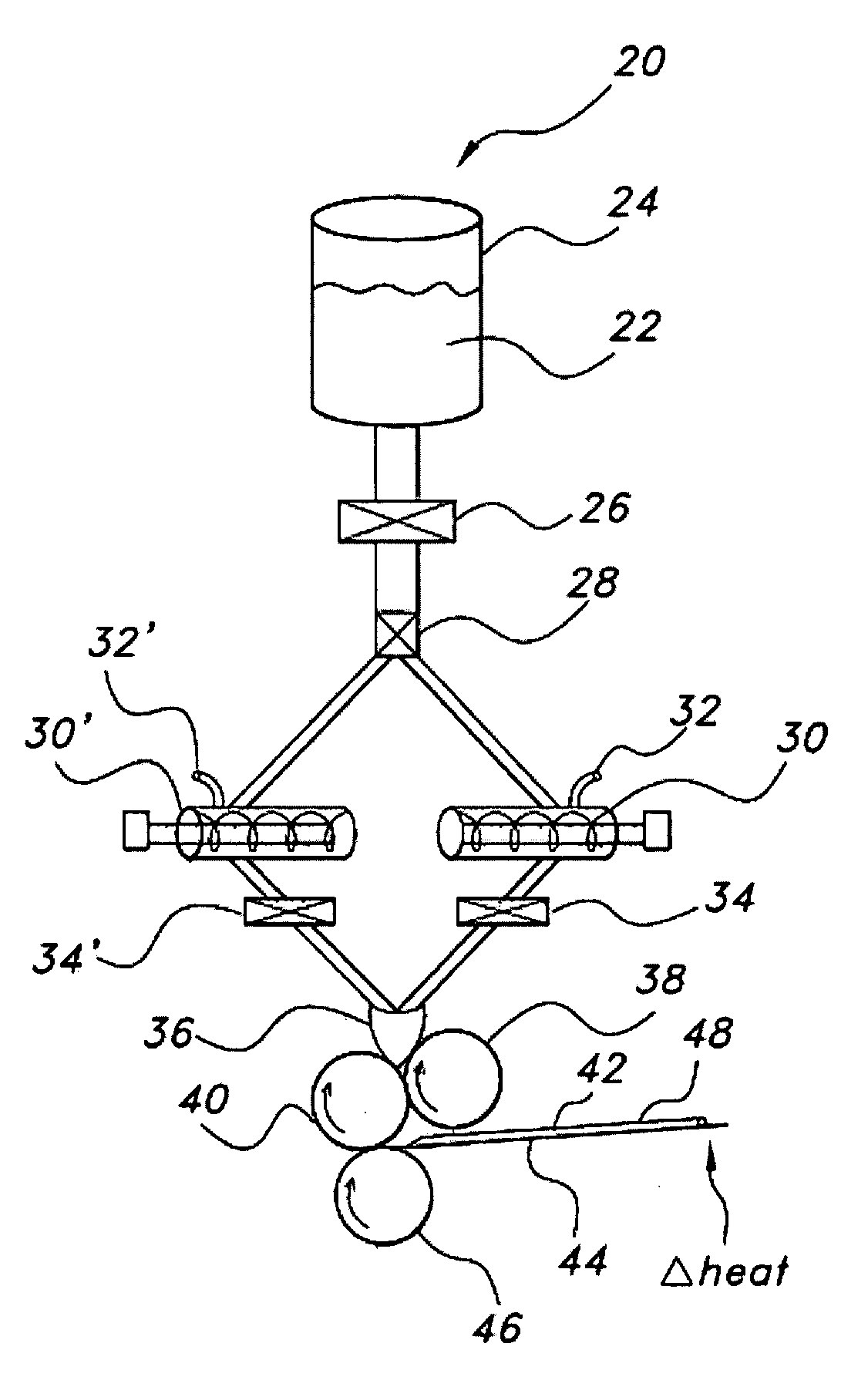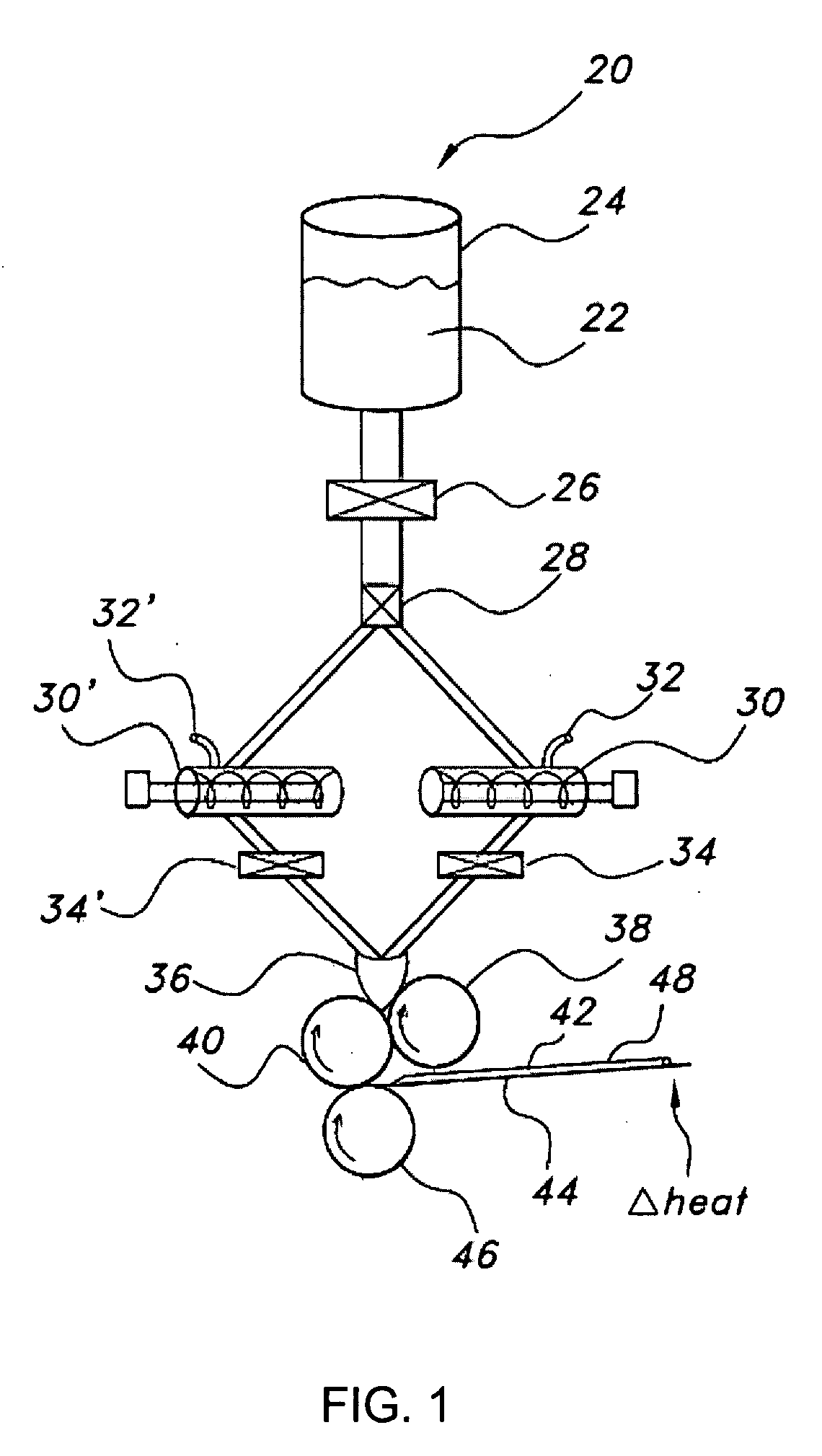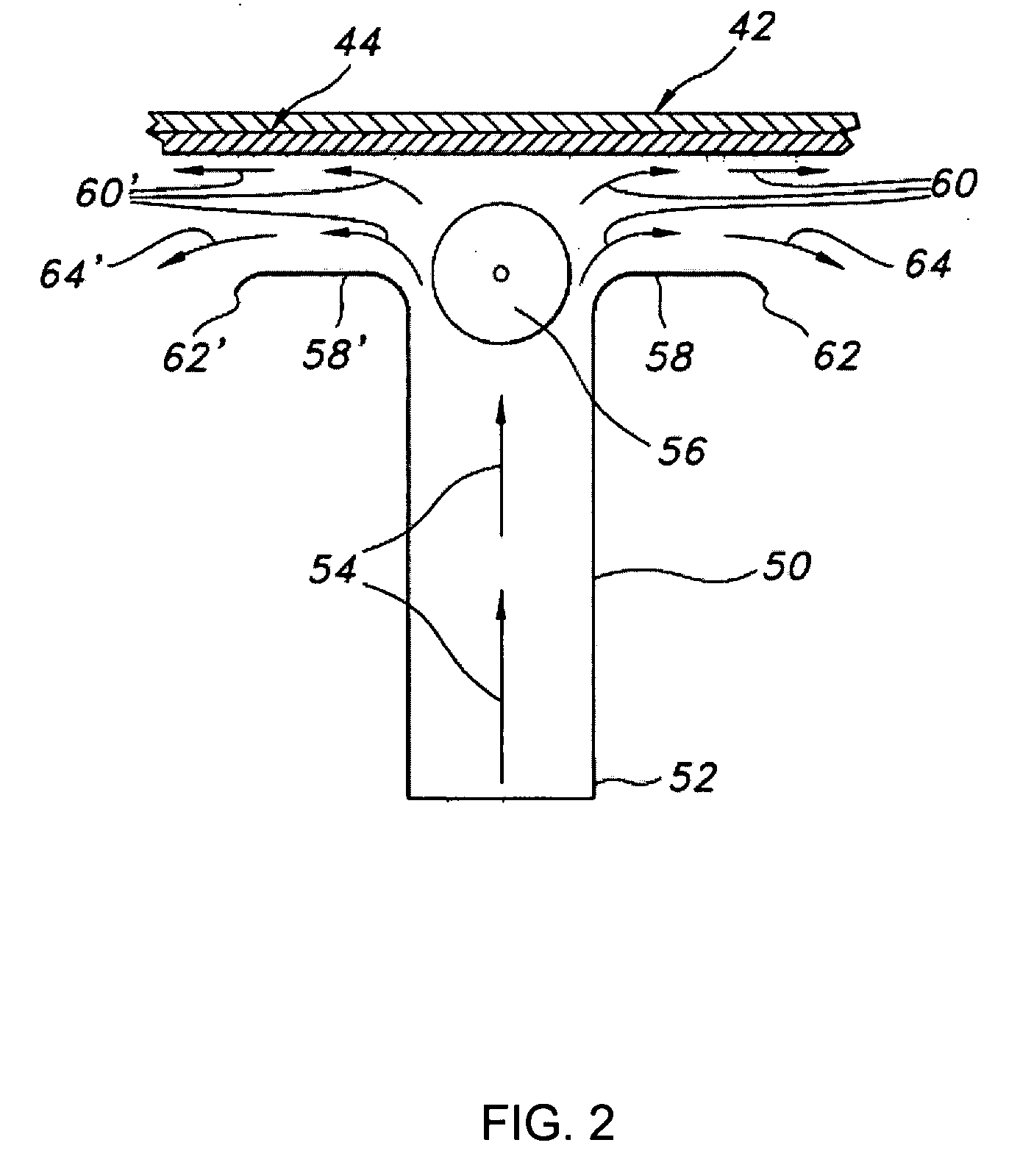Film shreds and delivery system incorporating same
a technology of film shreds and delivery systems, applied in the direction of biocide, bandages, drug compositions, etc., can solve the problems of large difference in the amount of active ingredients per film, inability to achieve a high degree of accuracy with respect to the amount of active ingredients in the cut film, and inherently non-uniformity, so as to improve the aesthetics of the composition, and reduce the risk of diseas
- Summary
- Abstract
- Description
- Claims
- Application Information
AI Technical Summary
Benefits of technology
Problems solved by technology
Method used
Image
Examples
example 1
[0241]Polymeric film shreds prepared, for example, in accordance with the formulations provided in Examples A-FK below, are combined with a suitable carrier to form compositions of the present invention. In the present example, polymeric film shreds are combined with a liquid carrier, such as an aqueous solvent and frozen. The frozen solvent may be a frozen popsicle, for example. The polymeric film shreds are of different colors, thereby enhancing the aesthetics of the frozen popsicle.
example 2
[0242]In the present example, polymeric film shreds are combined with a solid carrier, such as a tablet, capsule or caplet. The polymeric film shreds may be prepared using similar methods to those described below in Examples A-FK. In this example, the carrier includes an active, such as a drug. Drug products in solid forms, such as tablets, must disintegrate and dissolve before absorption can occur. Disintegration greatly increases the drug's surface area in contact with gastrointestinal fluids, thereby promoting drug dissolution and absorption. A disadvantage of certain solid forms, such as tablets, is that disintegration may be retarded by excessive pressure applied during the tabletting procedure or by special coatings applied to protect the tablet from digestive processes in the gut.
[0243]In one aspect of the present invention, polymeric film shreds, which may or may not include an active, are combined with powders used to form the tablets. The tablets may be optionally coated. ...
example 3
[0244]In the present example, polymeric film shreds including a first active, such as a flavoring agent, and a second active, such as a drug, are combined with a liquid carrier, such as water. A drug solution is thereby formed which has improved flavor properties. The polymeric film shreds may be prepared using similar methods to those described below in Examples A-FK.
PUM
| Property | Measurement | Unit |
|---|---|---|
| Temperature | aaaaa | aaaaa |
| Temperature | aaaaa | aaaaa |
| Temperature | aaaaa | aaaaa |
Abstract
Description
Claims
Application Information
 Login to View More
Login to View More - R&D
- Intellectual Property
- Life Sciences
- Materials
- Tech Scout
- Unparalleled Data Quality
- Higher Quality Content
- 60% Fewer Hallucinations
Browse by: Latest US Patents, China's latest patents, Technical Efficacy Thesaurus, Application Domain, Technology Topic, Popular Technical Reports.
© 2025 PatSnap. All rights reserved.Legal|Privacy policy|Modern Slavery Act Transparency Statement|Sitemap|About US| Contact US: help@patsnap.com



